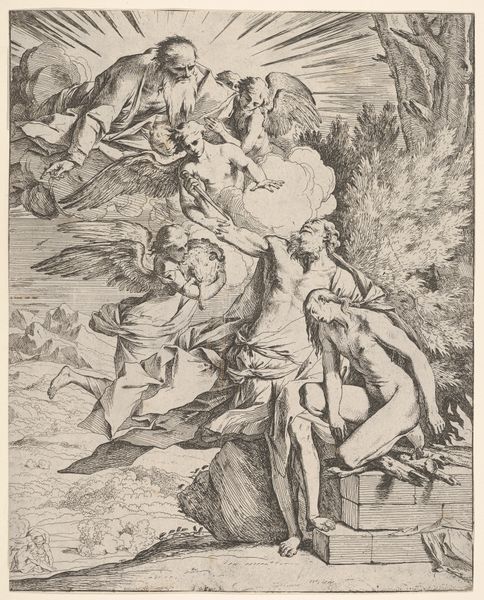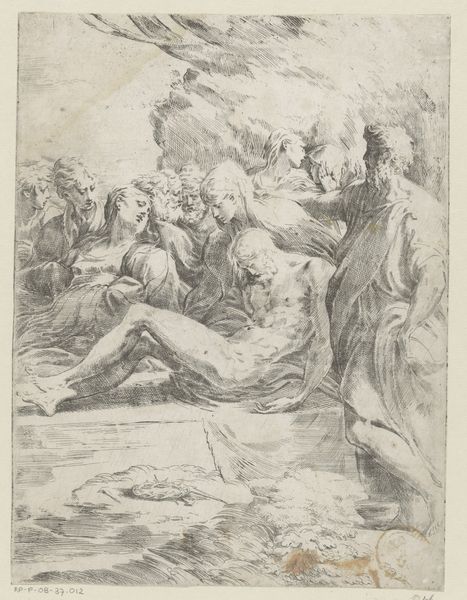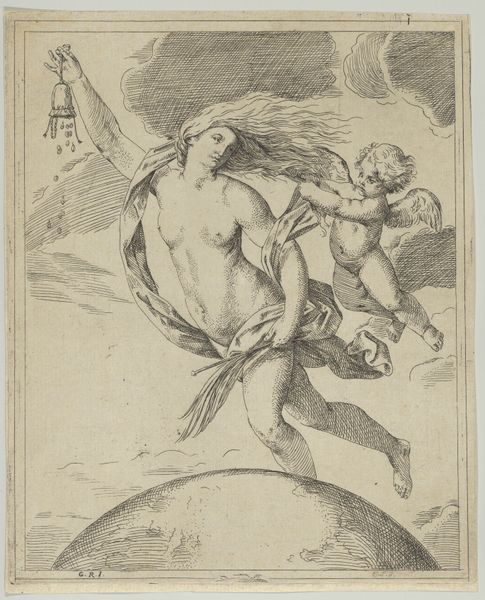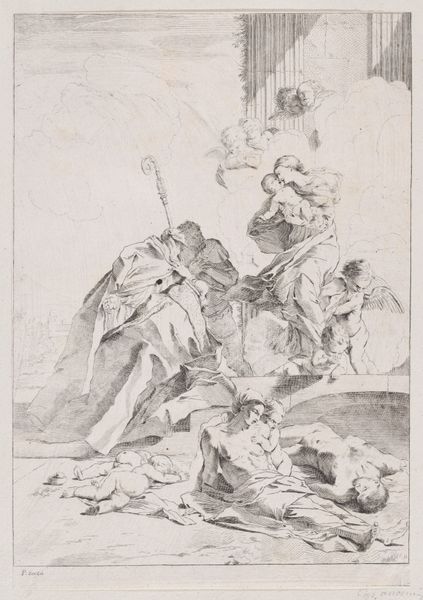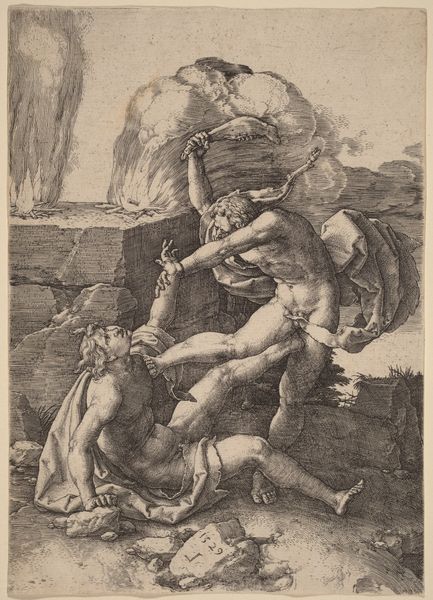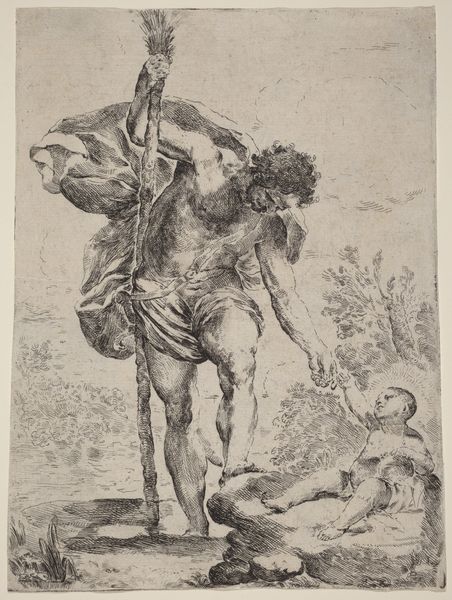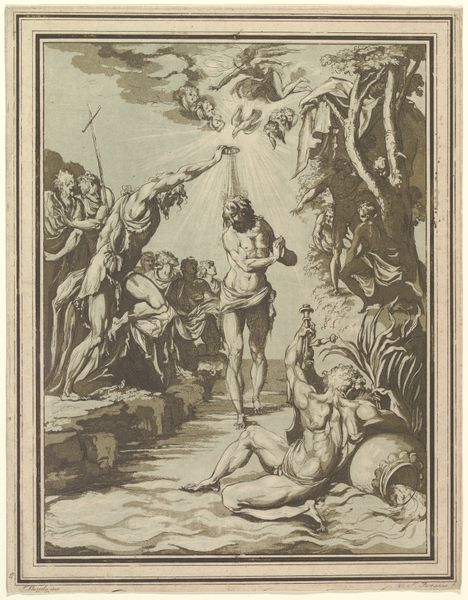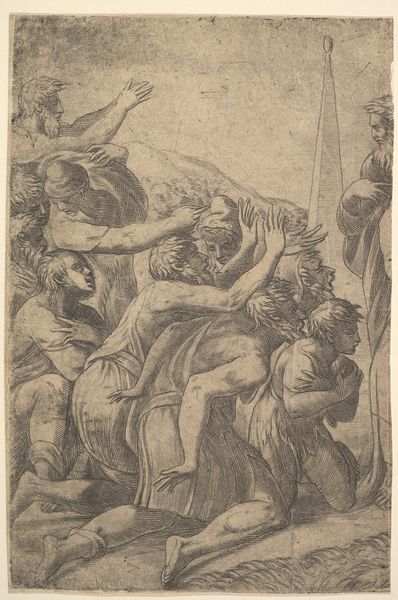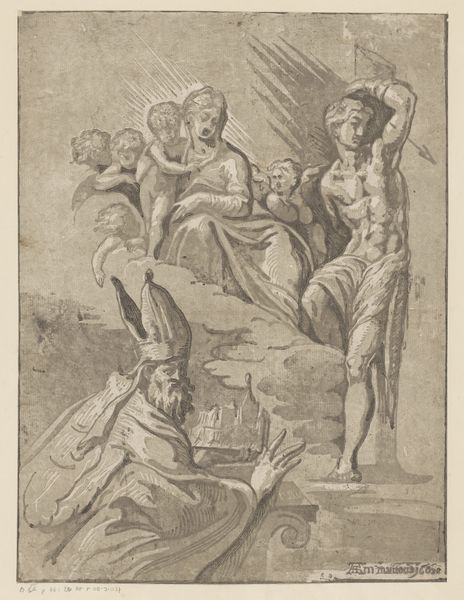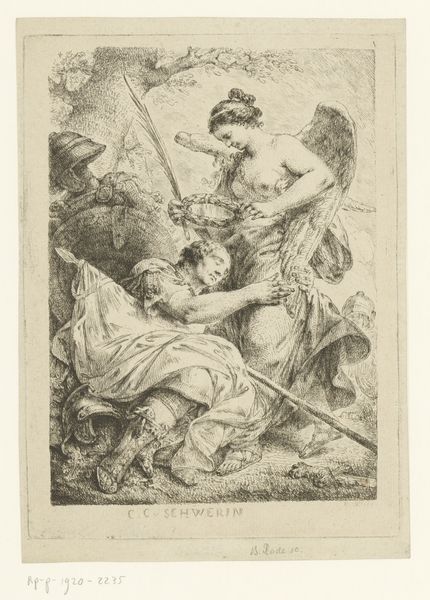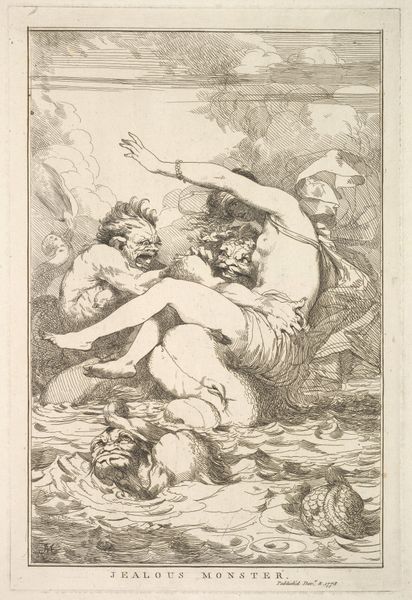
Samson holding the jaw bone of an ass over his head and standing next to the Philistines he has just killed, more dead bodies in the background, a tapered composition with rounded top, after Reni 1635 - 1660
0:00
0:00
drawing, print, engraving
#
drawing
#
baroque
# print
#
death
#
figuration
#
form
#
men
#
line
#
genre-painting
#
history-painting
#
nude
#
engraving
Dimensions: Sheet (Trimmed): 15 5/16 × 12 3/16 in. (38.9 × 31 cm)
Copyright: Public Domain
Curator: Here we have Flaminio Torre's "Samson holding the jaw bone of an ass over his head and standing next to the Philistines he has just killed, more dead bodies in the background, a tapered composition with rounded top, after Reni," likely made sometime between 1635 and 1660. Editor: The sheer physical presence of Samson dominates. I'm immediately struck by the engraving, by how stark and unromantic the depiction is. Curator: Torre created this image 'after Reni,' meaning he based it on a painting by Guido Reni. Consider how interpretations evolve across time and through different media. How might Torre's engraving, with its own technical constraints, add to our understanding of the original artistic intention? The narrative centers around themes of liberation and resistance against oppression, deeply interwoven with religious and social power structures of that era. Editor: And this "copy" redirects focus on the materiality of reproduction itself. Engraving allows for wider distribution and democratizes access to the imagery, turning an artistic representation into almost a commodity. The lines become labor made visible. The process by which the piece is produced and then shared, gives it another kind of meaning and value. Curator: The biblical figure of Samson has resonated across centuries and cultures. We can delve into the symbolic meaning of his strength in connection to his oppression, both physical and metaphorical. How do issues of strength, justice, and defiance against unjust authority play out in contemporary struggles? What kind of commentary does this artwork offer, on the male form and divine power? Editor: I am more concerned with the instrument of perceived divine power; namely, the jawbone. A blunt tool. Look closely and we can see that this object embodies raw, unrefined materiality. It symbolizes strength drawn from the simplest resources, and it's repurposed from animal remains—suggesting perhaps, an ecological or consumption-based commentary. What constitutes an implement of power and violence is key. Curator: Thinking about power, viewing this today invites dialogue between the history of religious conflicts and contemporary cultural debates surrounding religious symbols, and raises questions of how such stories shape identities. Editor: This engraving offers an intriguing glimpse at how an image evolves from artistic concept to tangible object—to social tool almost—highlighting art's transformative journey from high art to medium of mass production.
Comments
No comments
Be the first to comment and join the conversation on the ultimate creative platform.
